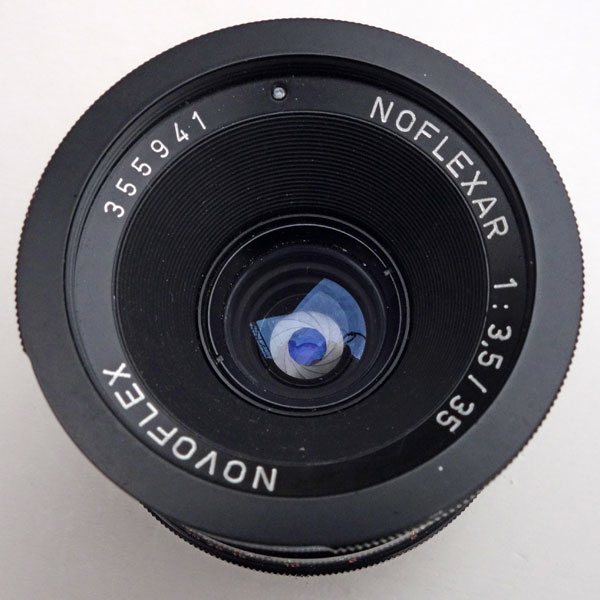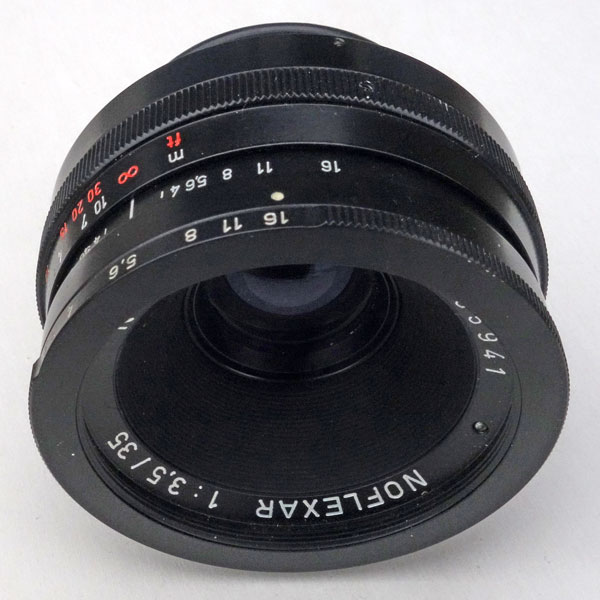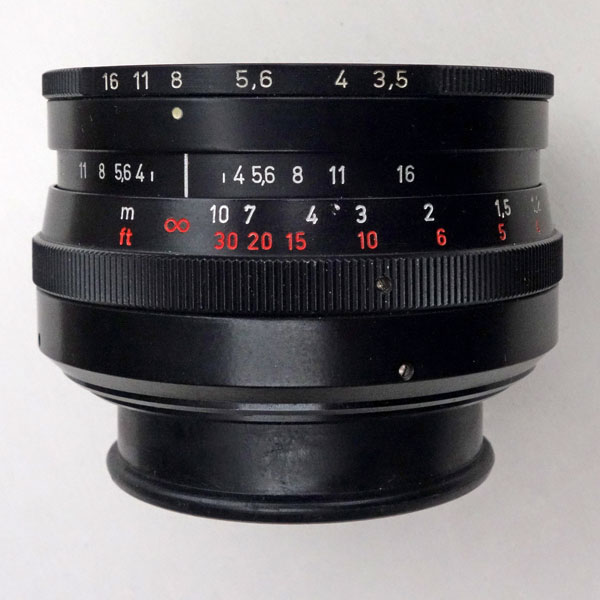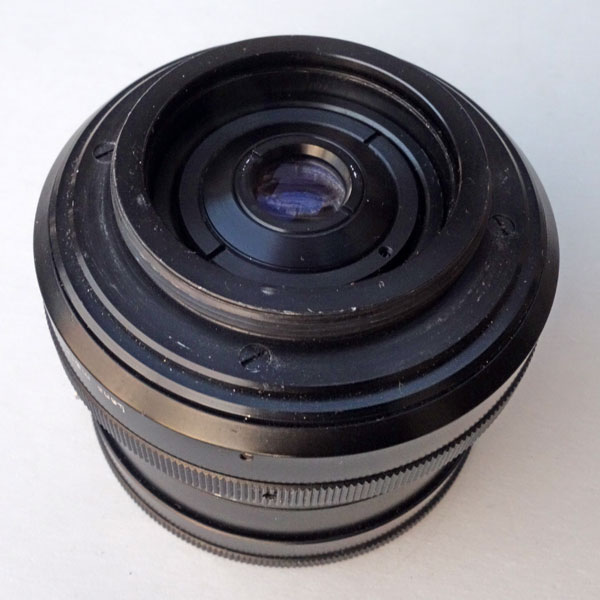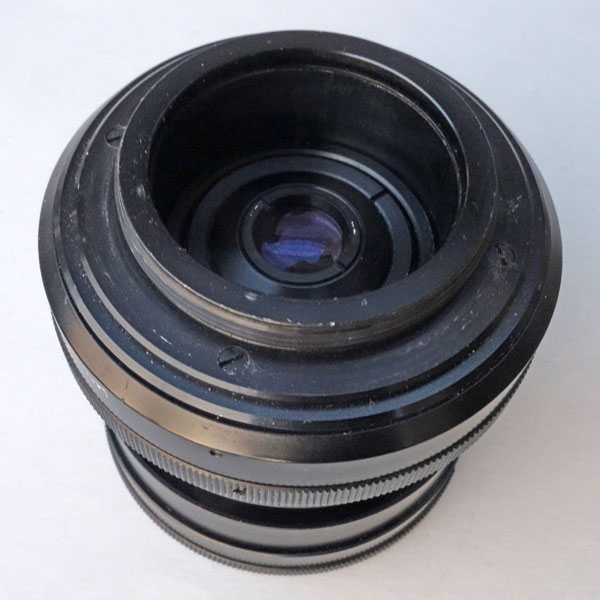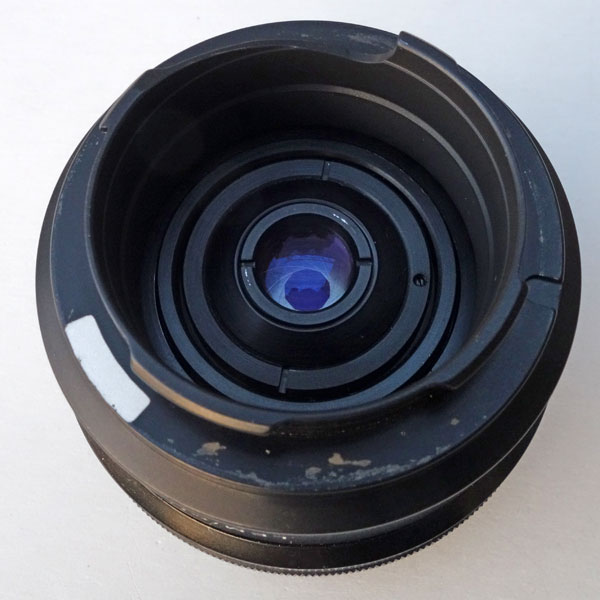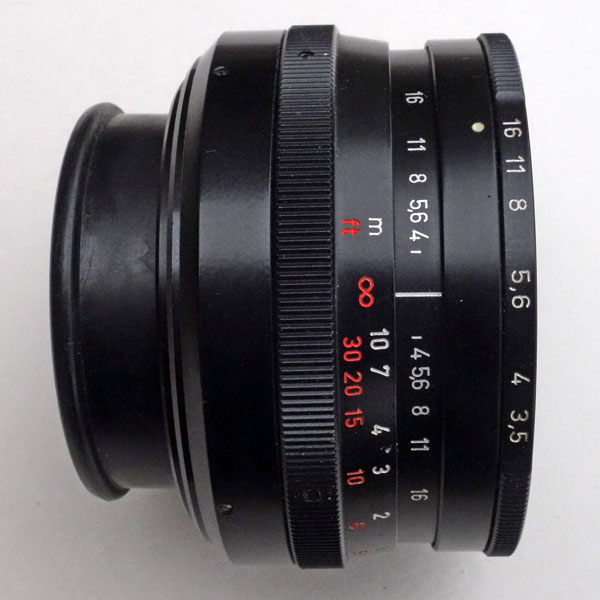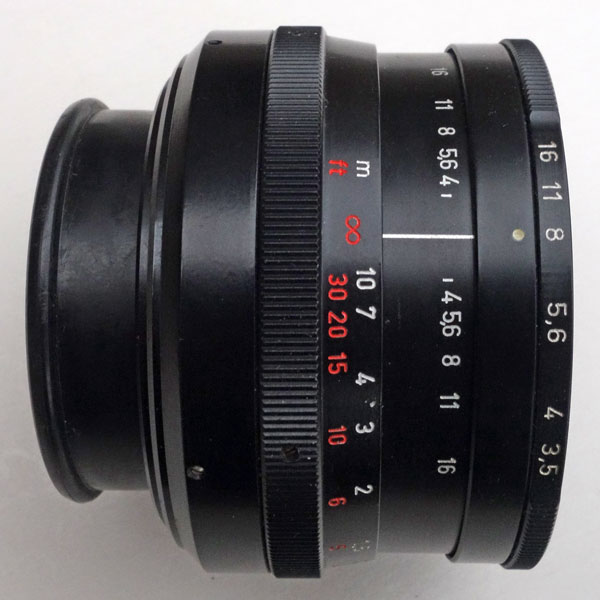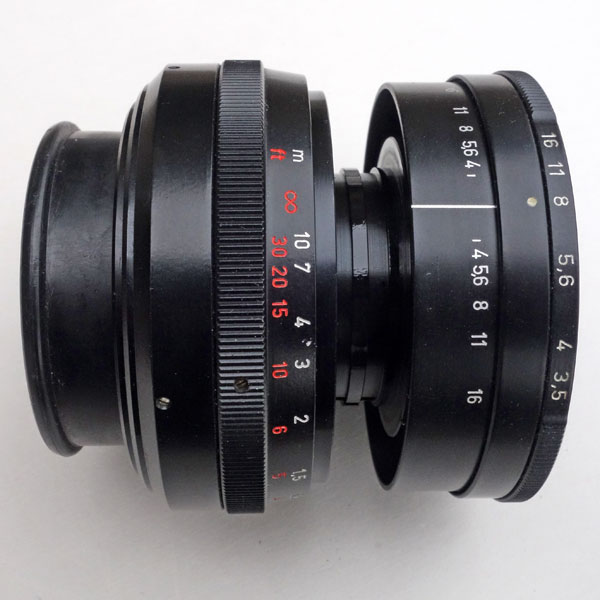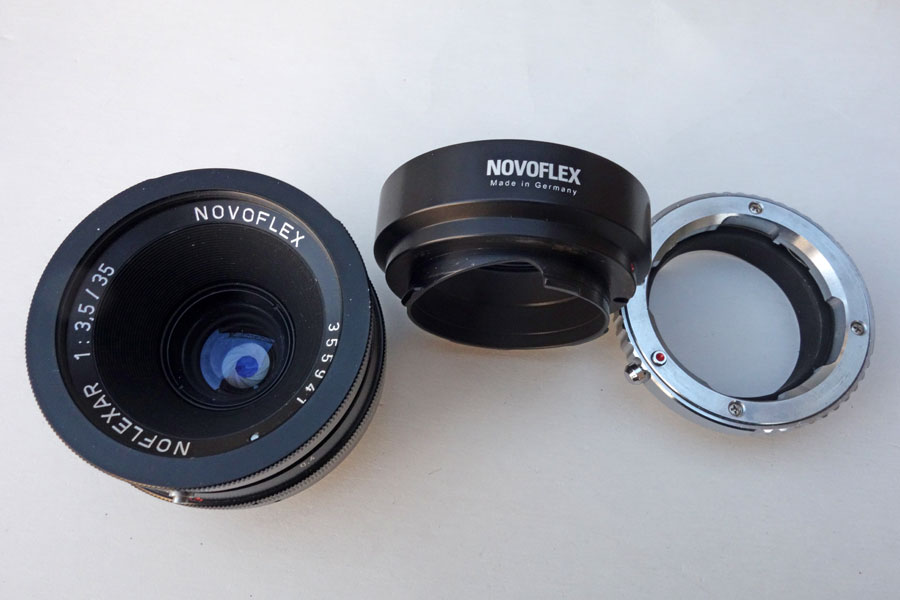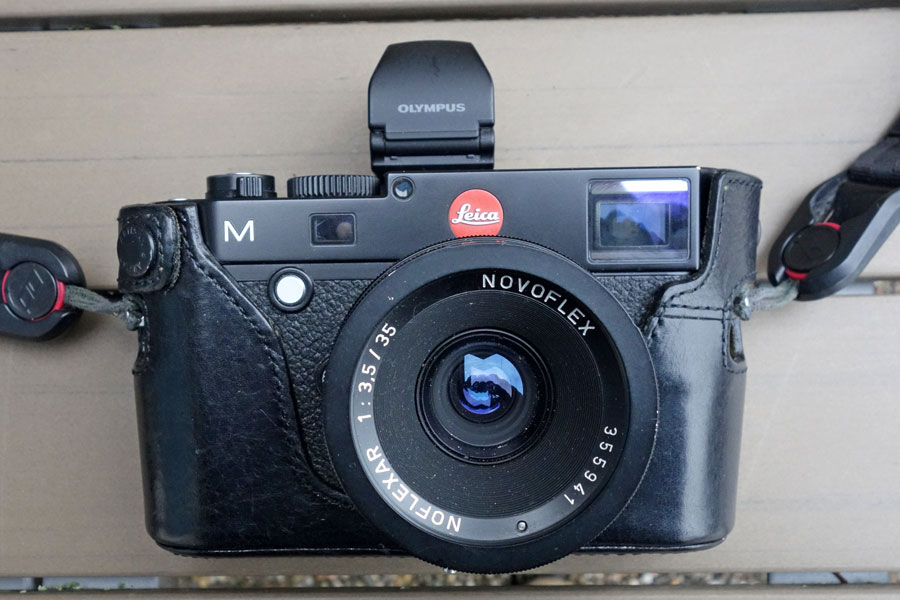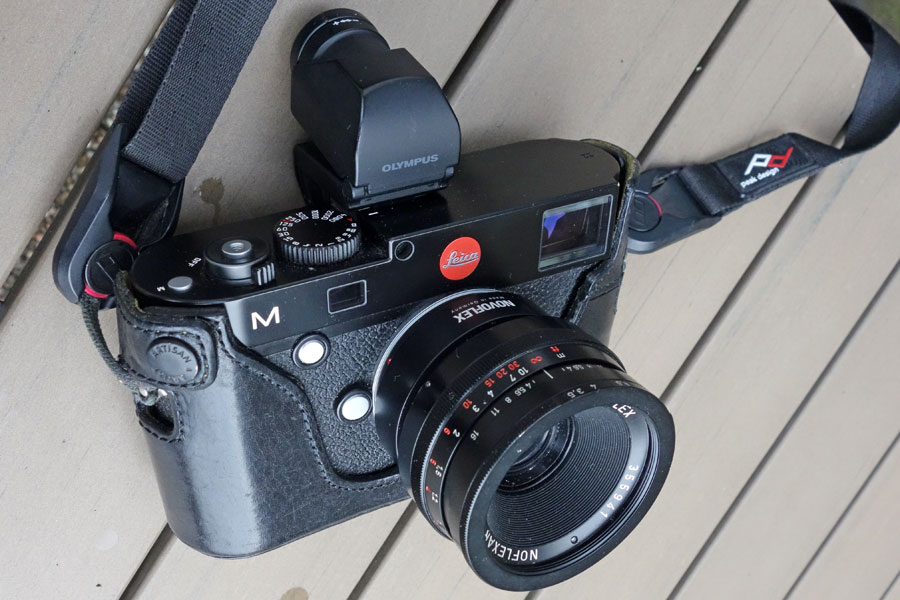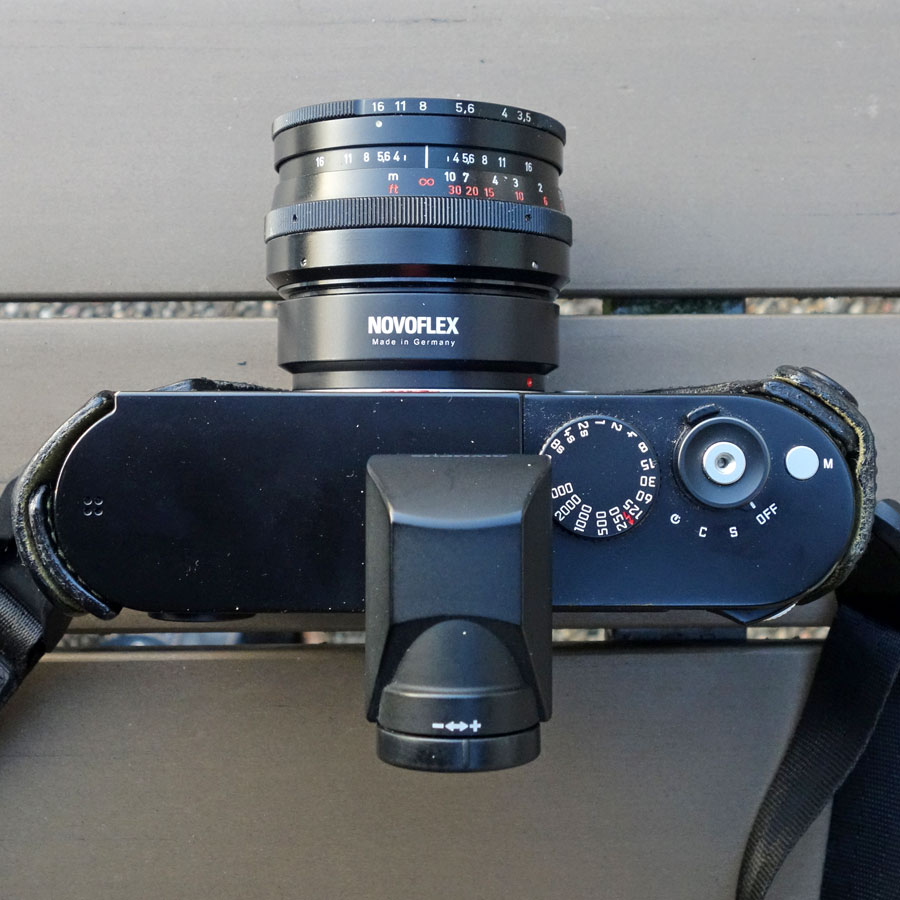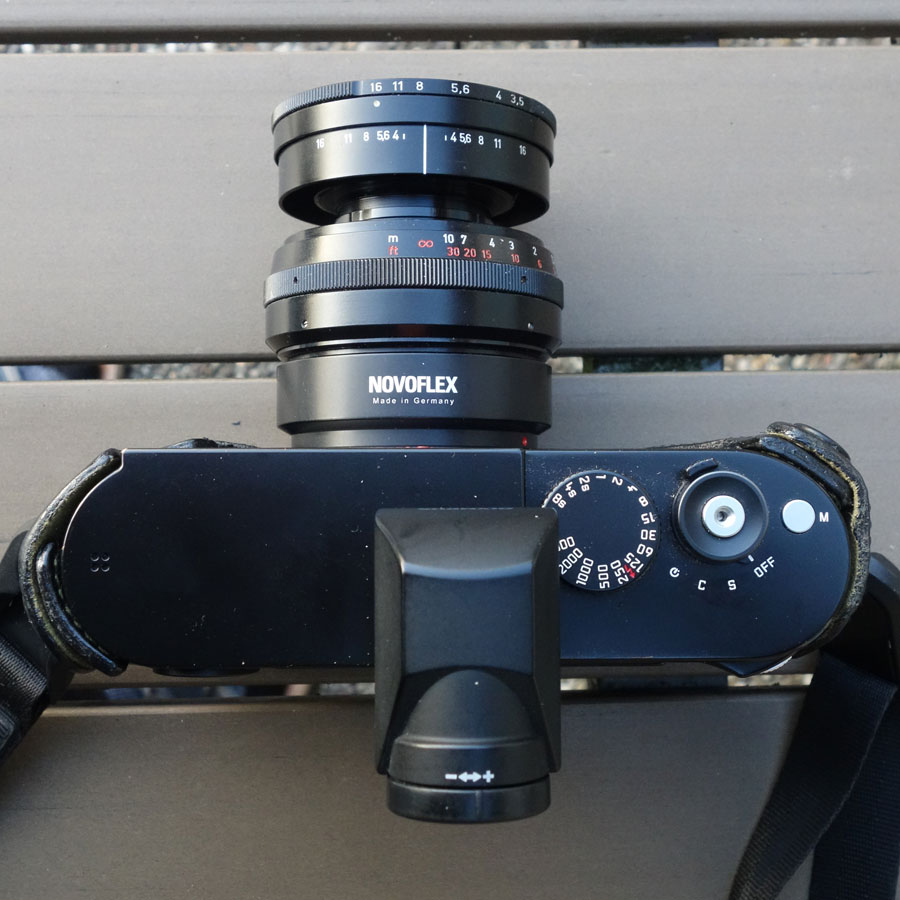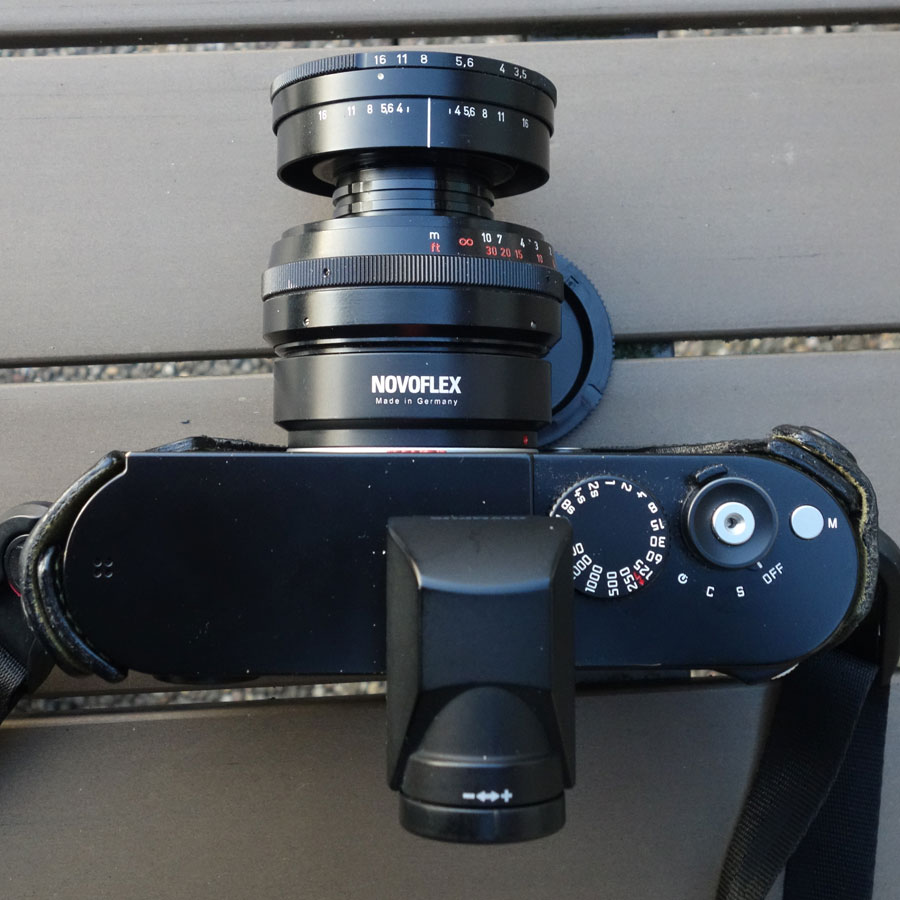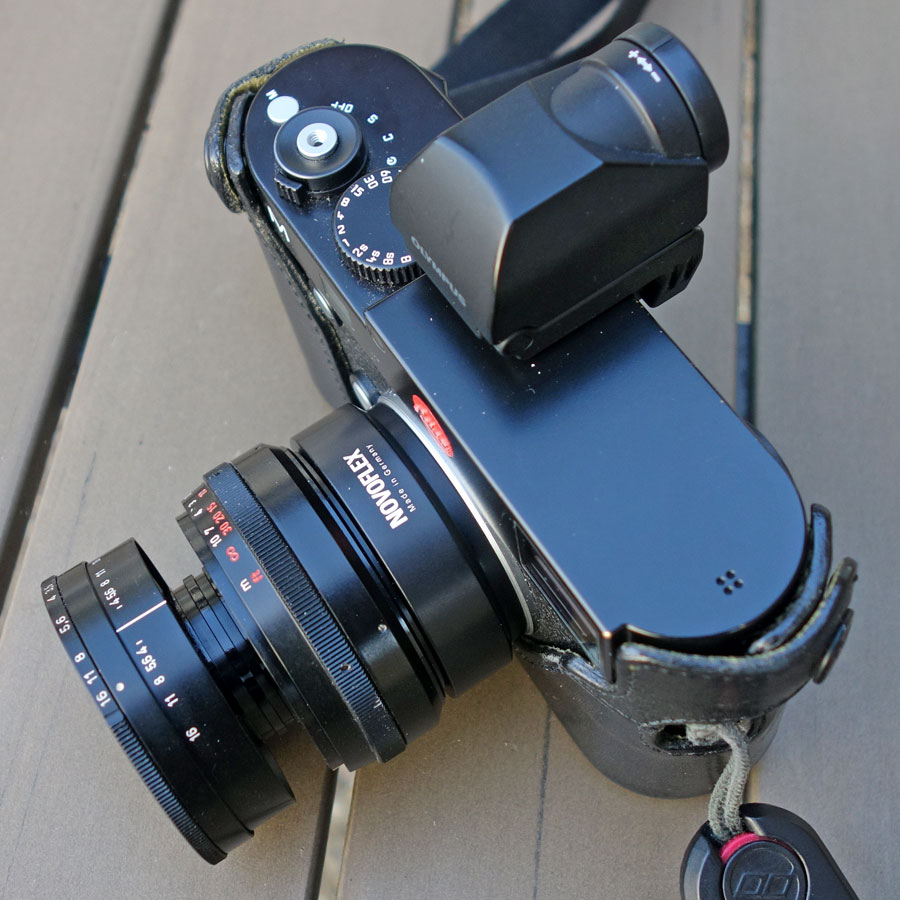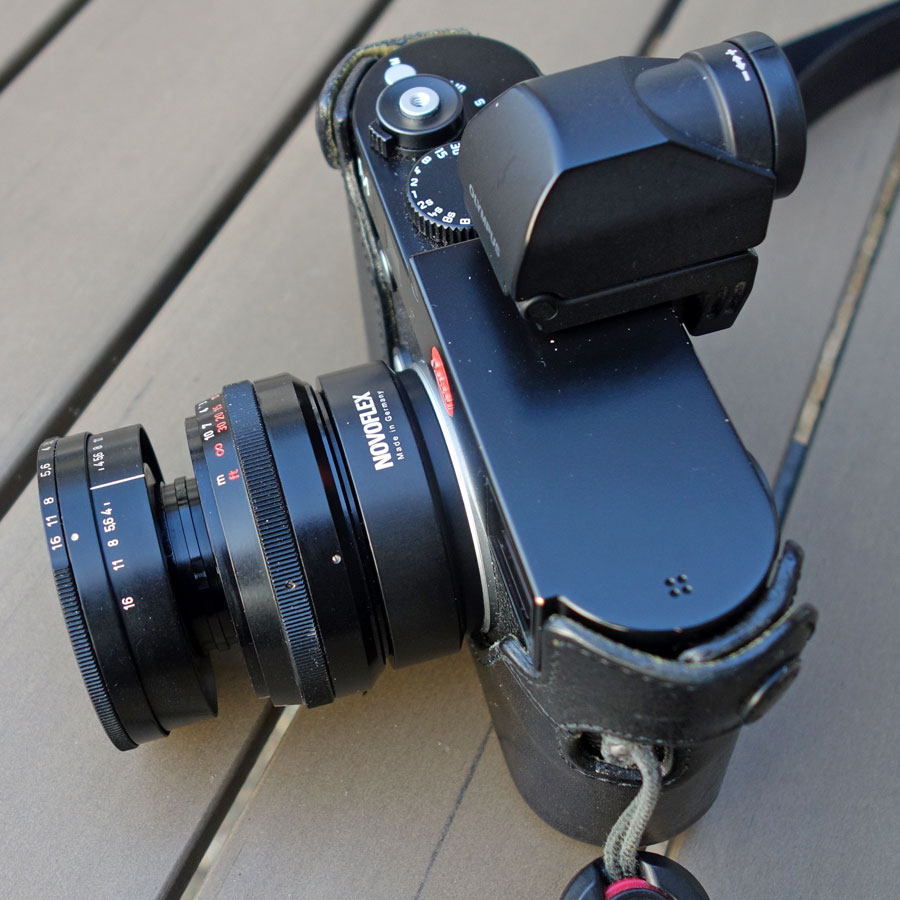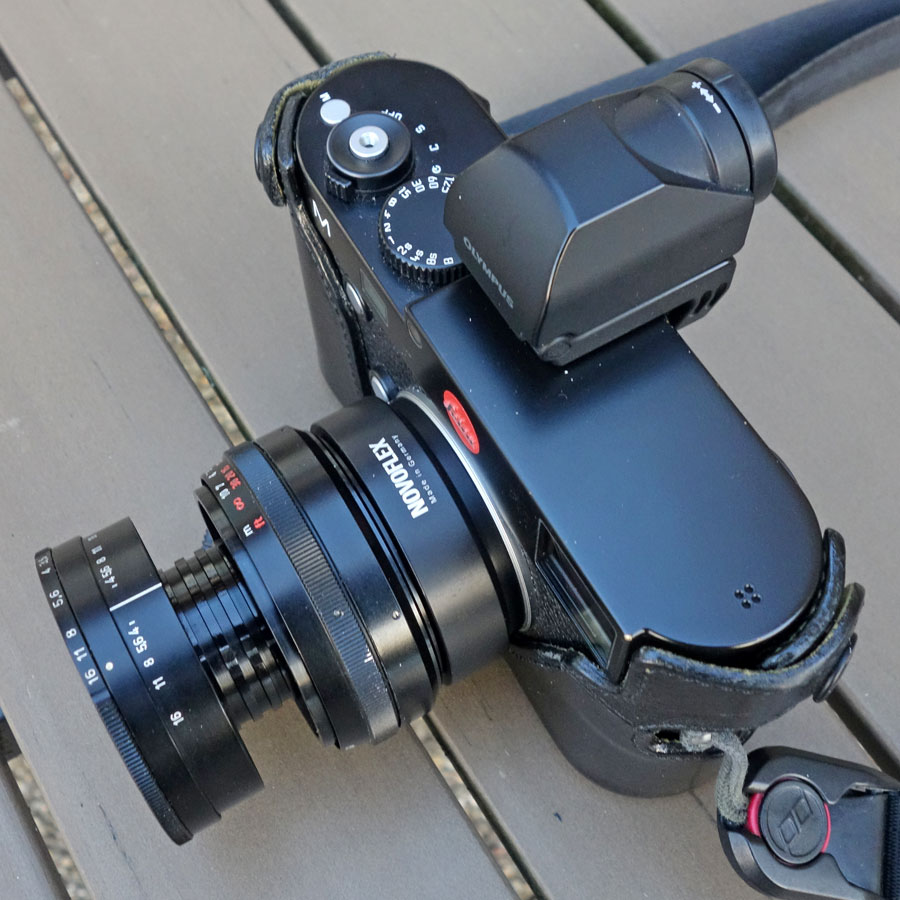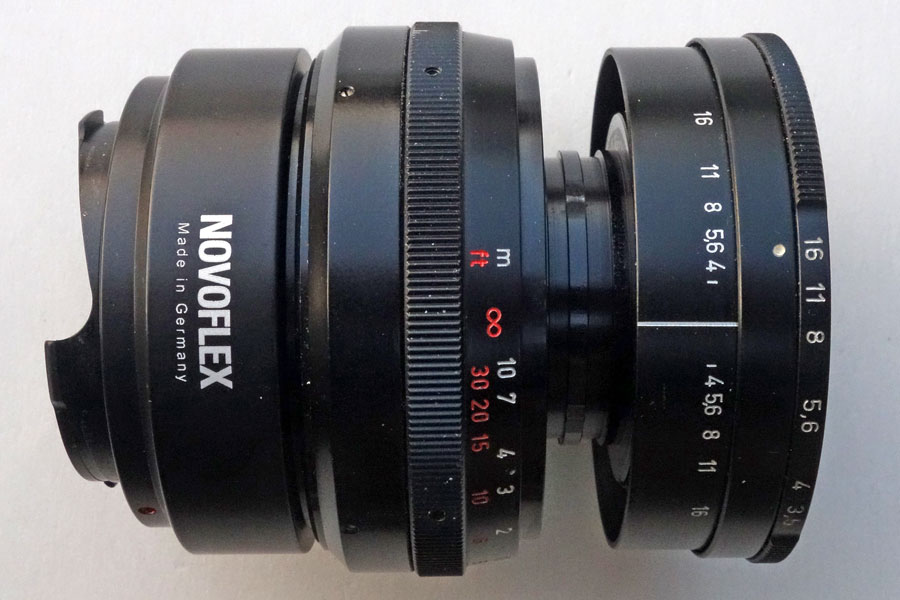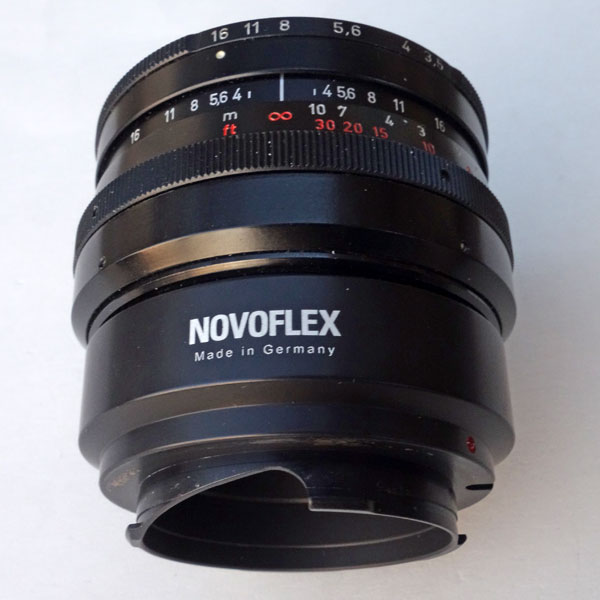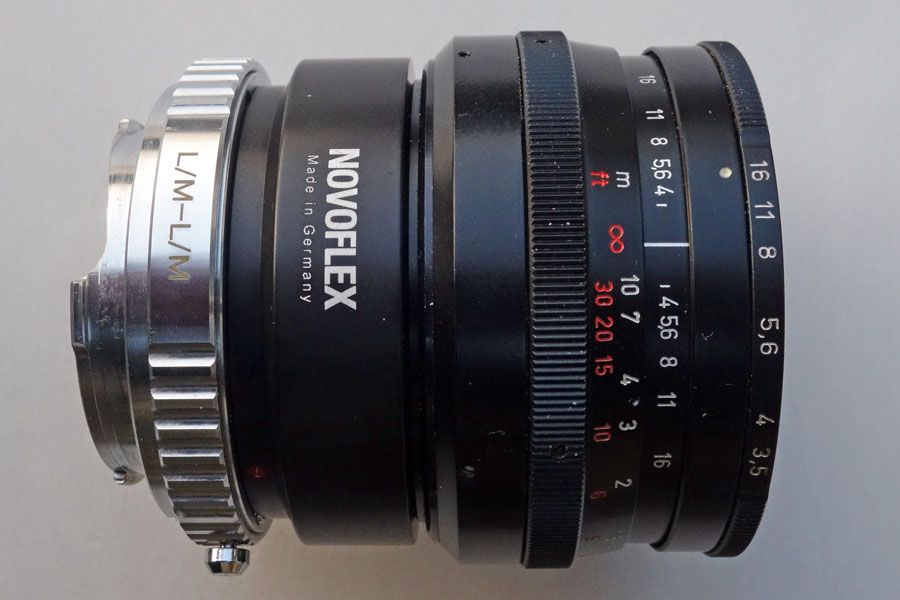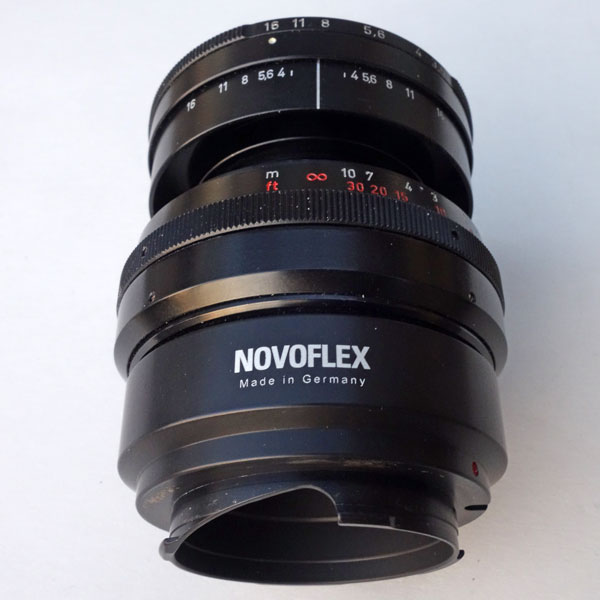Leica M (Typ 240): Close-Up Experiences - Part 4: Practice III
Introduction | Novoflex Noflexar 35mm f/3.5 Macro Lens | Using the Novoflex Noflexar 35mm f/3.5 Macro Lens as a Close-Up Lens | Summary and Conclusions | References
Archive
This page presents my practical experiences with close-up shots using an macro lens with the Leica M (Typ 240) in live view mode, namely the Novoflex Noflexar 35mm f/3.5 lens.
See page Close-Up Options (Live View) - Part 2: Practice I for my practical experiences with close-up lenses or achromats and extension tubes and page Close-Up Options (Live View) - Part 3: Practice II for my practical experiences with extension bellows.
See also page Close-Up Options (Live View) - Part 1: Overview for an overview of the options that you have for close-up shots when using the Leica M (Type 240) in live view mode and pages Close-Up Options (Live View) - Part 5: Samples I and Close-Up Options (Live View) - Part 6: Samples II, and Close-Up Options (Live View) - Part 7: Samples III for sample close-up photos with the Leica M (Typ 240).
Note: Page Close-Up Behavior of the M-Mount Lenses describes the close-up characteristics of the lenses when used without any close-up options.
Introduction
On page Close-Up Options (Live View) - Part 1: Overview, I mentioned that rangefinder camera are not well suited to close-up photography because of the parallax. With the Leica M (Typ 240), however, this has changed, because Leica added live view to the camera. With respect to close-up/macro photos, in live view mode the M behaves like a system camera (or like a DSLR) and can use all the techniques that these can use: close-up lenses, extension tubes, extension bellows, and macro lenses. On that page, I provide an overview of the options that you have for close-up shots when using the Leica M (Type 240) in live view mode. On this page and two other pages (see on top of the page), I would like to present my practical experiences in this domain, which are, of course, of anecdotic nature.
Because of the length of this page, I prepared three separate pages for presenting sample close-up photos (see on top of the page)
Calculating Magnification
From dkpeterborough (l-camera-forum) I adopt the way how magnification is calculated:
- Sensor width / object width = 35.8 [mm] / object width [mm] for the Leica M (Type 240) full format sensor.
Below, I will use this formula for calculating the achievable magnification under various conditions.
Novoflex Noflexar 35mm f/3.5 Macro Lens
The Lens Alone...
I bought the Novoflex Noflexar 35mm f/3.5 macro lens at the end of January 2017. My sample has an with M42 mount (COWEIT) and the serial number 355941. I do not know which production year this points to, but I read that the lens was manufactured in the 1960s (it was manufactured by Staeble who sold a more or less identical lens).
Photos: Novoflex Noflexar 35mm f/3.5 lens with different views and different extensions (there are four click-stops for extending the lens)
Adapters...
Since my Novoflex Noflexar 35mm f/3.5 lens has an M42 screw mount, I need an adapter to attach it to my Leica M (Typ 240). I bought the Novoflex LEM/CO adapter, and I was able to attach it to the lens without problems, though there is some slack.
Luckily, the Quenox Extension Tube for Leica M offers the option to achieve even higher magnifications by extending the lens barrel for another 1 cm. I cover this aspect on this page as well (see below).
 |
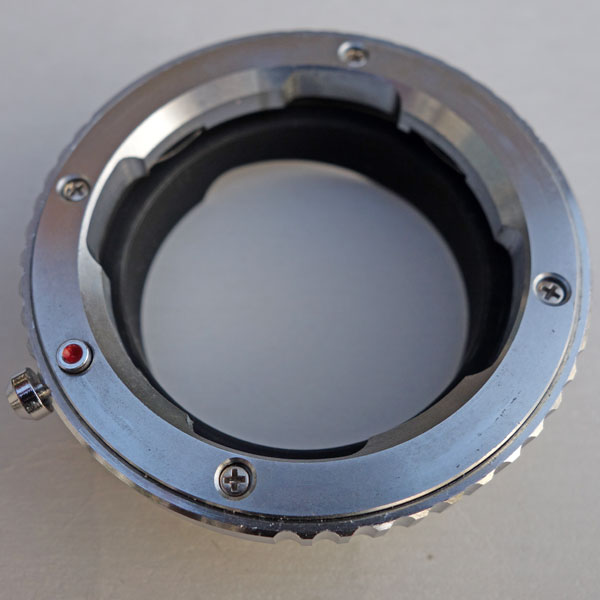 |
||
Novoflex LEM/CO adapter |
Quenox Extension Tube for Leica M |
||
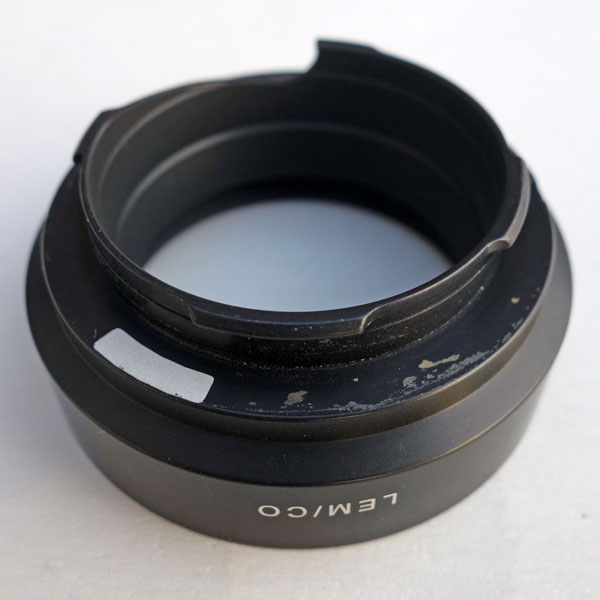 |
 |
||
Novoflex LEM/CO adapter |
Quenox Extension Tube for Leica M |
Photos: Novoflex M42-to-Leica M adapter (LEM/CO), Quenox Extension Tube for Leica M
So, this is my "macro set" for the Leica M (Typ 240) when I use a macro lens:
Photo: Novoflex Noflexar 35mm f/3.5 lens with Novoflex LEM/CO adapter and Quenox Extension Tube for Leica M
The Whole Setup
Lens with Novoflex LEM/CO Adapter
Photos: Leica M (Typ 240) with Novoflex Noflexar 35mm f/3.5 lens and Novoflex LEM/CO adapter
Lens with Novoflex LEM/CO Adapter and Additional Quenox Extension Tube for Leica M
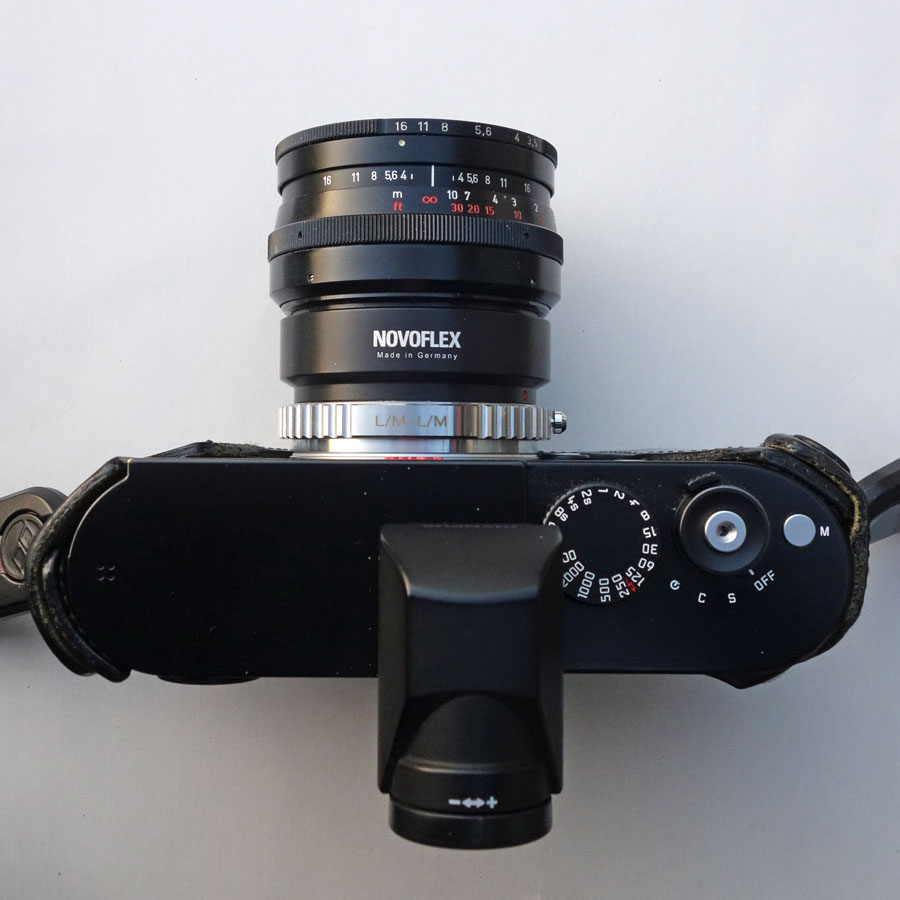 |
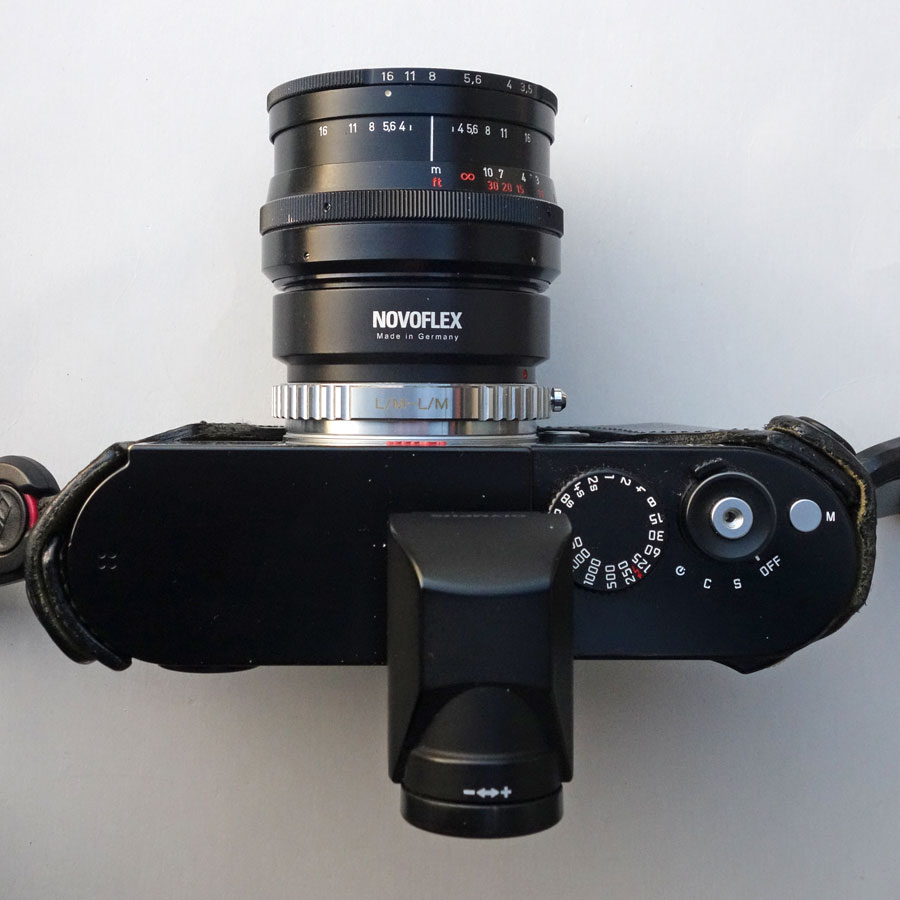 |
|
Collapsed, distance set to infinity |
Ditto, one click-stop, distance set to infinity |
|
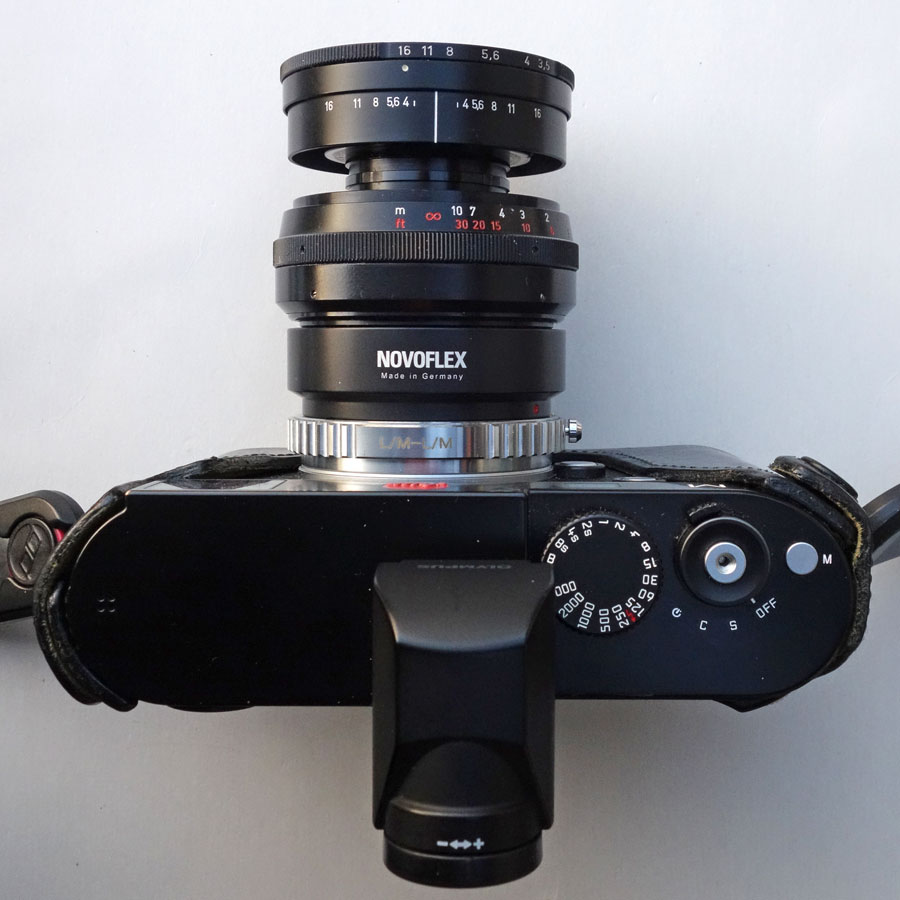 |
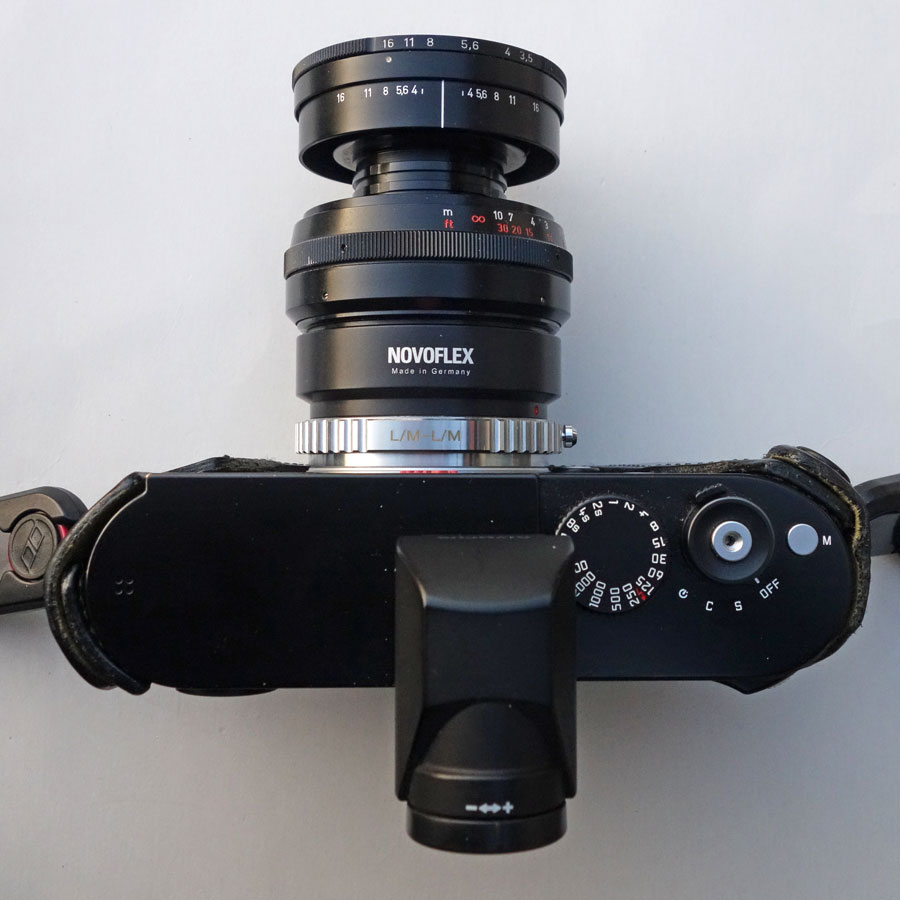 |
|
Ditto, four click-stops, distance set to infinity |
Ditto, distance set to close (about 0.3 m) |
Photos: Leica M (Typ 240) with Novoflex Noflexar 35mm f/3.5 lens, Novoflex LEM/CO adapter, and additional Quenox Extension Tube for Leica M (1 cm)
Lens with Adapter Attached
Lens with Novoflex LEM/CO Adapter and Quenox Extension Tube
Using the Novoflex Noflexar 35mm f/3.5 Macro Lens as a Close-Up Lens
Some Specialties
According to Novoflex, the Novoflex Noflexar 35mm f/3.5 lens serves two purposes: (1) It is a 35 mm lens that offers more field of view than a normal lens (50 mm), (2) it serves as a macro lens with magnifications of up to 1:2 without any other tools - the lens barrel can simply be extended like extension tubes via four click-stop positions. Fine tuning seems to be possible by turning the distance ring (the technical data sheet speaks of a "helical focusing mount"...). Larger magnifications are possible using extension tubes or bellows and/or by reversing the lens. I tested the Quenox Extension Tube for Leica M (1 cm) with the lens, and it seems to work well. Maximum magnification was, however, still below 1:1 with this 1 cm extension tube (lens not reversed).
From 1:1 or larger, Novoflex recommends to reverse the lens; they supplied respective rings for the filter thread (UMCO (M42), UMEX (Exakta), LEIUM (Leica)), but I do not know whether these are still available. They also state that the lens barrel acts as a lens hood in this case.
The table below describes the use of the lens as a macro lens and summarizes, which magnifications can be achieved with which lens setting without and with an additional Quenox Extension Ring. I do not present photos that "prove" my numbers (so there are no "ruler photos" here...), because in the end, I am probably the only person who will use this data... Anyway, this table should be taken with a grain of salt and be used only as an orientation aid.
Lens & Novoflex LEM/CO Adapter |
Ditto & Quenox Extension Ring (1 cm) | |||||||
| Click-Stops | MiOW* |
Max. Magnification |
MiOW* |
Max. Magnification |
||||
Distance set > |
infinity | 0.3 m | inf | close | inf | close | infinity | 0.3 m |
| 0 | n.a. | 265 | n.a. | 1:7.4 | 130 | 89 | 1:3.6 | 1:2.5 |
| 1 | 320 | 145 | 1:8.9 | 1:4.1 | 93 | 70 | 1:2.6 | 1:2.0 |
| 2 | 260 | 105 | 1:7.3 | 1:2.9 | 73 | 58 | 1:2.0 | 1:1.7 |
| 3 | 110 | 78 | 1:3.1 | 1:2.2 | 60 | 50 | 1:1.7 | 1:1.4 |
| 4 | 82 | 65 | 1:2.3 | 1:1.8 | 51 | 43 | 1:1.4 | 1:1.2 |
*) MiOW = Minimum object width
As you can see from the table, there is some overlap between the ranges that the different click-stops cover when you turn the helical distance ring. A magnification of 1:2 can only be achieved when the distance ring is set to the closest distance (or close to it) and the lens is extended four click-stops (without extension ring). The latter costs one f-stop exposure-wise. With the Quenox extension ring (1 cm), one can come fairly close to a magnification of 1:1 and loses probably about two f-stops.
Summary and Conclusions
It looks like I have started an interesting journey with buying the Novoflex Noflexar 35mm f/3.5 macro lens. Taking close-up shots with it is fun and much easier than using close-up lenses. Adding an extension tube adds some complexity, but allows for more magnification. The lens is very prone to flare and creates "sun rings" when wider open, though. At f/8 and more, this improves considerably. It alos cannot be used for objects at infinity (or large distances). All in all, I am quite impressed with what is possible with this lens - despite all its limitations...
In the end, this lens is the most straighforward solution for taking close-up shots with the Leica M (Typ 240) - at least for me...
A smaller set of sample photos taken with the Novoflex Noflexar 35mm f/3.5 macro lens is presented on page Close-Up Options (Live View) - Part 7: Samples III.
There are also quite a few sample photos on this site that I took with this lens - so see for yourself:
References
Extension Tubes
- Novoflex: Extension tube set Leica M (www.novoflex.com/en/products/adapters/extension-tube-set-leica-m/) / Zwischenringsatz Leica M (www.novoflex.com/de/produkte/objektiv-adapter/zwischenringsatz-leica-m/)
- enjoyyourcamera: Quenox Zwischenring für Leica M - ersetzt Leica OUFRO bzw. Leitz 16469Y (http://www.enjoyyourcamera.com/Makrozubehoer/Makro-Zwischenringe/Quenox-Zwischenring-fuer-Leica-M-ersetzt-Leica-OUFRO-bzw-Leitz-16469Y::6791.html)
Extension Bellows
- Novoflex Company Website (www.novoflex.com/en/home (English), www.novoflex.com/de/home (German))
- Novoflex: Adapted bellow systems for the Leica M (Typ 240) and S (Universal-Balgengeräte für Leica M240 und Leica S) (www.novoflex.com/de/produkte/makrofotografie--blitztechnik/balgengeraete/universal-balgengeraete-fuer-leica-neu (German only))
| 04.07.2024 |
